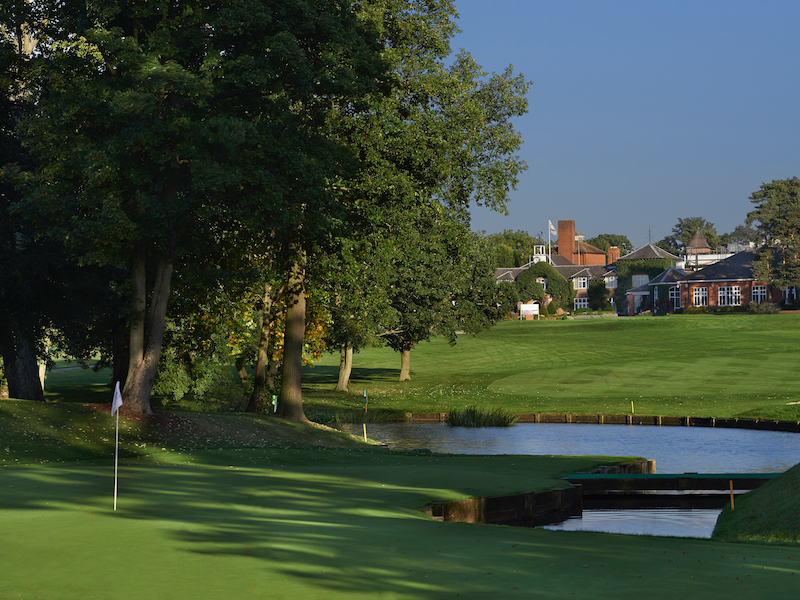Should Every Golf Course Have A Drivable Par 4?
You have to treat some with the utmost respect, but what's not to like about a drivable par 4 and the chance to pick up one, maybe even two, shots?


You have to treat some with the utmost respect, but what's not to like about a drivable par 4 and the chance to pick up one, maybe even two, shots?
Should Every Golf Course Have A Drivable Par 4?
The term ‘drivable’ is, of course, open to interpretation as it depends, first and foremost, on how far you can drive the ball.
Yes, topography, wind direction and firmness of ground will then have a bearing on how much further you might be able to hit it in certain conditions. But if you can’t hit the ball 220 yards in still conditions, it’s unlikely any par 4 will ever be drivable for you.
At the other end of the scale, tour pros are regularly now making mincemeat of holes measuring 350+ yards, sometimes even up to 400 yards.
Given this wide gulf in hitting distances, we’re going to focus here on the kind of hole many golfers might anticipate being drivable on certain days – those short par 4s in the region of 260 to 300 yards for men and perhaps 40 yards less for ladies.

Should every golf course have a drivable par 4 like that? Yes, because while there are many holes where par is a very good score indeed for most golfers, isn’t it nice to also have some where you stand on the tee and think, “You know, I reckon I could just about get there today.”
Get the Golf Monthly Newsletter
Subscribe to the Golf Monthly newsletter to stay up to date with all the latest tour news, equipment news, reviews, head-to-heads and buyer’s guides from our team of experienced experts.
And who doesn’t relish the prospect of a two-putt birdie and the chance to get the scorecard heading in the right direction?
The risk-reward dilemma
But, of course, the fact that a hole might be drivable doesn't mean that you should always be attempting to drive it. Varying degrees of risk-reward play a big role on many short par 4s.
So, even if you’re sure you could reach and are contemplating opening your shoulders, it may not always be the wisest thing for your scorecard.
Many drivable par 4s need to be treated with a healthy dose of respect. Yes, a birdie or rare eagle would be very nice indeed – but if you mess up and rack up a big number, it can be hard to come to terms with.
Self-recrimination abounds: “Why on earth did I try to do that? Why didn’t I just hit mid-iron and wedge then move on!”

And that is an added beauty of drivable par 4s – they play with your mind and sometimes goad you in to attack when defence may be the better option. Courses with no such hole are missing out on this psychological conundrum.
The high risk holes
Perhaps the most famous drivable par 4 in GB&I is the mischievous 10th at The Belfry, star of several Ryder Cups. Everyone who plays this 300-yarder wants to have a go, but such is the level of risk and the degree or precision required to avoid the water and trees and find the tiny target, the odds are stacked against success.
Others in the most risky bracket would be the 15th on Celtic Manor’s TwentyTen course and the 14th at Loch Lomond, a course that is, sadly, largely inaccessible to most golfers.

These two 90˚ dogleg-right holes are different to The Belfry in that their drivability comes through spurning the conventional fairway route and taking a direct shot at the green across the corner.
This makes them much shorter than their scorecard yardage. In both cases, though, the penalty for miscues can be severe in the form of water, trees and/or thick rough if you stray offline.
Perhaps slightly less risky, but reserved for those days when your driver is flying straight and true, is the 10th at Royal Lytham off the more forward tees. But it is blind over a crest and if you aren’t straight you won’t see exactly where it has gone

Interestingly, two of Scotland’s youngest links have risk-reward short par 4s purpose-built into their design, suggesting that many modern course designers are keen to have at least one such hole on their creations.

More tempting options
The 6th at Kingsbarns and 3rd at Castle Stuart both probably fall into the medium risk category. You’re unlikely to lose your ball but could leave yourself a very tricky second if you get badly out of position. Especially if you miss left on the latter, as you’re likely to do in your desire to steer well clear of the Moray Firth on the right.

But there are plenty of examples on our older links too, among them the 9th and 10th on the Old Course at St Andrews, both of which might fall into the low-risk category.

Yes, there’s gorse and some nasty bunkers to avoid, but because the two holes play side-by-side there is a bit of space. A less claustrophobic feel can sometimes encourage you to swing more freely than when you know you really have to steer it down there.
Perhaps the ultimate low-risk drivable par 4 is then the 18th at Prestwick, which hosted the first 12 Open Championships.

Stretching to just 288 yards off the tips, and with relatively few places where you can come a serious cropper, it provides the perfect opportunity to finish with a flourish and make that first pint taste even better.
Should every golf course have a drivable par 4? We think so!

Jeremy Ellwood has worked in the golf industry since 1993 and for Golf Monthly since 2002 when he started out as equipment editor. He is now a freelance journalist writing mainly for Golf Monthly. He is an expert on the Rules of Golf having qualified through an R&A course to become a golf referee. He is a senior panelist for Golf Monthly's Top 100 UK & Ireland Course Rankings and has played all of the Top 100 plus 91 of the Next 100, making him well-qualified when it comes to assessing and comparing our premier golf courses. He has now played 1,000 golf courses worldwide in 35 countries, from the humblest of nine-holers in the Scottish Highlands to the very grandest of international golf resorts. He reached the 1,000 mark on his 60th birthday in October 2023 on Vale do Lobo's Ocean course. Put him on a links course anywhere and he will be blissfully content.
Jezz can be contacted via Twitter - @JezzEllwoodGolf
Jeremy is currently playing...
Driver: Ping G425 LST 10.5˚ (draw setting), Mitsubishi Tensei AV Orange 55 S shaft
3 wood: Srixon ZX, EvenFlow Riptide 6.0 S 50g shaft
Hybrid: Ping G425 17˚, Mitsubishi Tensei CK Pro Orange 80 S shaft
Irons 3- to 8-iron: Ping i525, True Temper Dynamic Gold 105 R300 shafts
Irons 9-iron and PW: Honma TWorld TW747Vx, Nippon NS Pro regular shaft
Wedges: Ping Glide 4.0 50˚ and 54˚, 12˚ bounce, True Temper Dynamic Gold 105 R300 shafts
Putter: Kramski HPP 325
Ball: Any premium ball I can find in a charity shop or similar (or out on the course!)
-
 JM Eagle LA Championship Prize Money Payout 2025
JM Eagle LA Championship Prize Money Payout 2025The LPGA Tour heads to California for the JM Eagle LA Championship, where the largest prize money payout of the season so far is on the table
By Mike Hall
-
 Corales Puntacana Championship Prize Money Payout 2025
Corales Puntacana Championship Prize Money Payout 2025The PGA Tour’s latest opposite field event features an attractive prize money payout and some former champions in the field
By Mike Hall